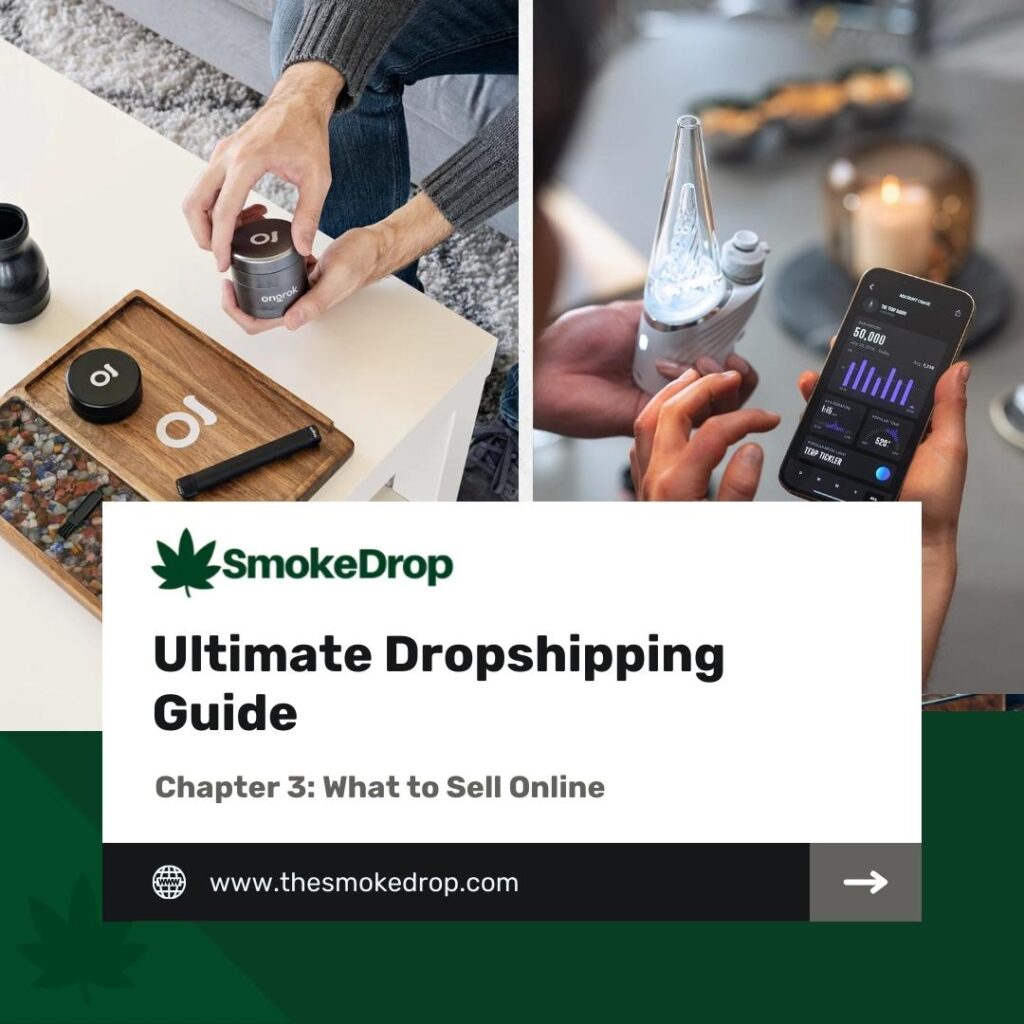
The age-old question for new resellers echoes loudly: “What should I sell online?”
It’s a query that opens the floodgates to infinite options—what products to choose, which suppliers to partner with, and the overall business type to establish. The abundance of possibilities often leads to what’s commonly known as “analysis paralysis.”
The silver lining? Online platforms witness the sale of millions of products daily, spanning almost every conceivable segment. If you’re crafting your own items, assessing demand can be challenging. However, when sourcing products from wholesalers, rest assured they’ve already gauged the demand, justifying large-scale stocking of these brands and items. The question then shifts from whether the products can sell to who is best positioned to sell them.
So, when pondering the pivotal question, “What should I sell online?”, the answer hinges on who you are, not just what’s marketable. The quest for profit often leads sellers to ask, “Which products will make me the most money?” Yet, there’s no one-size-fits-all answer; it’s about aligning with the right products based on your identity. Identifying this synergy will unveil your true profit potential.
Consider the following factors to enhance your chances of discovering a lucrative dropshipping product opportunity and optimizing your expenditure for maximum returns:
What Products Do You Know Best?
Begin your product evaluation journey by considering what you know best. Reflect on your expertise and passion for specific product types and categories. This intrinsic knowledge often sets successful retailers apart. While competing with giants like Amazon may seem daunting, your ability to offer added value through deep understanding and expertise can be a game-changer.
Some argue that “following your passion” ranks low in product selection importance. While keyword analysis and demand tools uncover underserved niches, the dropship market’s saturation demands a competitive edge. Retailers often find this edge in exemplary customer service, product expertise, and brand building within their communities.
Familiarity with your products aids in selecting featured items for your store and crafting effective marketing materials. Knowing where enthusiasts gather online and identifying niche forums and blogs becomes second nature.
A Universally “Perfect Product” Doesn’t Exist
Choosing products based solely on keyword and trend analysis can be challenging to launch and gain traction. While artificial flowers may boast untapped demand, diving into a product unfamiliar to you complicates fundamental steps like writing product content, site design, identifying target buyers, and community engagement.
Although research and trend analysis are vital for niche selection, ensure it’s a category where you can invest time to become an expert. Knowledge leadership truly is your key to success in the dropshipping world.
An online venture can be daunting, so start with what you know. Expand into new lines as you grow, adding suppliers or even additional stores. Starting simple not only accelerates customer value but also lays a foundation for future expansion.
Evaluate Buzz and Hype
Identifying the products that you know and love is a solid start, but their viability needs validation. Conduct independent research to gauge genuine customer resonance. Explore whether the product enjoys popularity in different regions, as successful trends often transcend borders. Google Trends offers valuable insights, showcasing increasing search term traffic as a positive indicator.
Utilize tools like Google Keyword Planner, Wordstream, and Amazon’s autocomplete function to delve into product categories. By now, you should have a clearer view of a product’s buzz, armed with potential keywords and customer profiles.
Distinguish between buzz and actual purchases; the latter is crucial. Tools like JungleScout and ASINspector help assess product success on Amazon, with Sales Rank being a key demand indicator. A rule of thumb is a product with an Amazon Sales Rank between 1,000 and 5,000 and fewer than 300 reviews, indicating lower competition. Consider the product’s YouTube presence, as well as the quantity and popularity of reviews.
For those versed in marketing funnels, scrutinizing the first page of search results unveils the balance between upper and lower funnel outcomes. Lower funnel pages signal purchase intent, while upper funnel pages are informative. A prevalence of lower funnel results implies a considerable purchasing audience, indicating high conversion potential. If a product shows promise, consider investing in a Facebook ads test. Allocate $100 to a split test promoting a “pre-order” campaign, gauging demand by selling the product first and placing orders upon purchase. While this demands upfront effort to establish supplier relationships, set up a landing page, and create advertisements, it’s a worthwhile experiment for promising products.
Consider the Price Range of Your Target Items
About the $70-170 Rule
Understanding the price range of your target items is a strategic move, especially when dealing with a diverse catalog or a large supplier. While it’s not mandatory for the majority of items to fall within the $70-170 range, focusing on products in this bracket can enhance your online promotion and feature selection.
Consider this rule even if your supplier offers items with smaller or higher price tags. The $70-170 range is optimal for achieving a reasonable profit per order without an influx of pre-sale inquiries or the need for extensive content. It strikes a balance where customers are willing to make a purchase without exhaustive deliberation.
When dealing with products priced $70-170, customers are less likely to scrutinize every detail before buying, compared to higher-ticket items like laptops or those exceeding $1,000. For costlier products, detailed content, easy accessibility, and robust customer support become pivotal. Higher-priced items demand a level of assurance and customer service that differs significantly from lower-cost products.
Products within the $70-170 range also naturally attract more orders compared to pricier goods. Understanding this dynamic is crucial for planning your business strategy. Selling only high-dollar items requires targeted approaches to reach a smaller customer base or allocate more time to customer support and detailed content.
Focus on Order Volume
Conversely, if your products fall below this price range, focus on order volume as a key contributor to your revenue. Listing items on established platforms like eBay and Amazon can leverage existing traffic, or consider suppliers in this price range with streamlined order processes for quick and efficient bulk orders.
While successful sellers operate across all price points, it’s vital to align your product range with the time and support you can feasibly provide. If time constraints are a factor, starting with lower-cost items might be a prudent choice, ensuring that your business aligns with your available time and capacity to add value.

Choosing Profitable Products: A Strategic Approach
Offline Availability
The success of dropship products online often hinges on their limited availability in local brick-and-mortar stores. Products that are everyday commodities, readily found in local shops, might not perform well. However, this doesn’t mean universally available items can’t find a niche. Unique features or a specific brand can cater to enthusiasts, creating a lucrative market segment.
Types of Buyers
Steer clear of products considered “life commodities,” designed for daily use and appealing to the mass market. Instead, focus on variations that captivate the enthusiast buyer. For instance, high-end outdoor products with advanced features can attract tactical enthusiasts, creating a high-demand, low-competition market within the broader category.
Timing of Need
Consider the urgency of your product. If customers can’t wait for a week, it might not thrive online. Despite rapid shipping capabilities, customer expectations and buying habits still align with a 3-5 day delivery window. Don’t attempt to dropship products with immediate, essential needs, as customers often seek local options for quick consumption.
Evaluating Search Engine Competition
The ability to rank is crucial. Some niches and keywords face intense competition, making it challenging to secure a spot on the first page. Analyze top-ranking pages, considering their SEO strength. Tools like Ahrefs provide insights into keyword competition. If top positions are dominated by major brands, ranking may prove difficult.
Assessing Paid Ads Competition
Paid advertising can offset strong competition in search results. Examine ads associated with your target term and assess CPC bidding rates. Tools like SEMrush and Google Keyword Planner help evaluate the cost and competitiveness of keywords, offering valuable insights into the feasibility of paid promotion strategies.
Choosing the Right Niche: Key Considerations
As you navigate the landscape of selecting a product niche, it’s crucial to ask yourself a few key questions:
Are Your products complex?
Consider the complexity of your potential products. The more intricate or technical they are, the greater the opportunity to leverage your expertise. Products with technical components demand a deeper understanding compared to simpler household items. Your ability to guide customers and provide valuable insights can set you apart in niches with more intricate offerings.
Are there accessories in your product niche?
Consider the accessories within your chosen product segment—it’s not just about high-dollar items. Take, for instance, an electronic device priced at $500. While the unit itself may have a slim margin, you can significantly boost your overall profits by guiding customers to essential accessories. Even though these are lower-cost items, they often come with a more substantial profit margin.
In scenarios where customers are making significant purchases, their focus tends to be on comparing prices for the main product. However, when it comes to accessories, buyers are often less price-conscious and may not extensively compare various online sellers. Seize this opportunity to add value by helping them confirm their choice of the higher-priced item.
Does the brand offer MAP protection?
Consider whether the brand you’re eyeing provides robust MAP protection (Minimum Allowed Price) for its products. A MAP value ensures that the product cannot be sold below a specified price point, offering a safeguard for your margins, even on higher-priced items. This simplifies your pricing strategy, especially when utilizing tools to manage prices and ensure MAP compliance, as there’s less pricing variability online.
If a significant portion of your items follows MAP guidelines, you have less to worry about in terms of pricing competition. With limited room for differentiation based on price alone, you can enhance your online store by focusing on enriching product content and promoting cross-products effectively.
However, it’s essential to be vigilant. If you come across instances where resellers are listing products below the stipulated MAP, it’s advisable to reach out to the supplier or brand for guidance. Enforcing MAP policies creates a level playing field and ensures fair competition. If you notice non-compliant listings, informing the brand or supplier can lead to prompt action, reducing competition and giving your venture a head start.
Do you know how to reach your target customers?
Understanding how to connect with your target customers is pivotal. Whether your products cater to hobbies, outdoor ventures, or household items, the strategies to reach your audience will differ significantly. Let’s delve into this essential consideration.
If your focus lies in hobbies, your existing knowledge of specific shows and events related to your niche can become powerful marketing tools. Being part of these events can boost your visibility and credibility. Moreover, if you understand how government organizations make purchases in your niche, you might streamline the process of becoming an authorized vendor. This could open doors to governmental contracts and establish valuable contacts, providing a strong foundation for your initial customer base.
On the other hand, if your passion lies in outdoor gear, leveraging your social networks becomes key. Engaging in social media marketing becomes more accessible when your products align with the interests of your network. Active participation in industry-specific forums or message boards can further enhance your credibility, helping you quickly gain the trust of potential customers when you promote your website on these platforms. Understanding your target audience is not just about what you sell but also about how and where you can effectively communicate with them.
Does your product niche have an active fan base?
An active, supportive fan base can be a game-changer for your online venture. While creating compelling content for your products is essential, tapping into the potential of your customer base can save you valuable time. Consider this: if your product segment aligns with a passionate community, you can leverage their enthusiasm to amplify your brand.
For instance, if your products cater to hobbies, engaging with bloggers and social media influencers can be incredibly fruitful. Many of these product influencers love sharing insights and reviewing products tailored to their hobby. Their willingness to write product reviews can become a powerful marketing tool for your items. Even if your product segment doesn’t naturally have the robust network seen with hobby items, you can still target segments that value product expertise.
You don’t necessarily need to be a hobbyist to sell these products successfully. However, if you’re already part of relevant online communities or possess a background that resonates with your target audience, leveraging these connections can significantly boost your brand promotion efforts. Connecting with your customers on a personal level builds trust and encourages them to actively support and market your brand.
Does the product life cycle fit your customer service skills?
Getting your first customer is no easy feat. If you’re confident that your prowess in customer service and follow-up is unmatched, consider products with shorter life cycles. Why? Because short life-cycle items create a natural inclination for customers to return for more. The magic ingredient for long-term sales growth? Repeat business.
If you’re dealing with low-cost, everyday household items, the key to success is their recurrent need. Even seemingly mundane products require replenishment, presenting a golden opportunity for customer retention. If your strength lies in cultivating customer loyalty through post-sale processes such as thoughtful follow-ups, newsletters, or timely reminders about past purchases, then these are the kinds of items that could flourish under your approach.
On the flip side, if your expertise leans more towards ecommerce marketing than hands-on customer or post-sale support, you might find success in products that don’t heavily rely on repeat purchases from the same customer base. Tailoring your product selection to align with your customer service strengths can be a strategic move, ensuring that each customer you win becomes a lasting advocate for your brand.
Conclusion
Choosing the ideal product for dropshipping is a delicate blend of art and science. Regardless of the products you decide to dropship, establishing a business around them demands a substantial investment in time and marketing. While a universally “perfect product” doesn’t exist, recognizing and eliminating subpar options is a crucial starting point in your venture. This guide aims to assist you in filtering out products that may hinder rather than propel your dropshipping venture forward.



